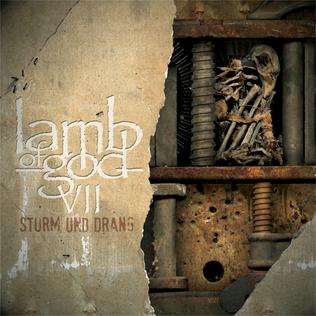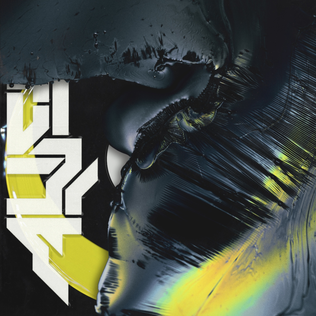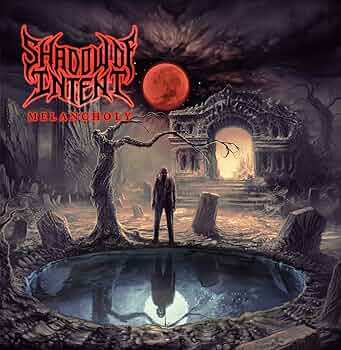Nearly three years after the prosecution of vocalist Randy Blythe, Lamb of God approached their new album with two main ‘theses’: to illustrate the struggle of Randy Blythe’s time in the Czech prison and the inner turmoil during this time. Henceforth, the name of which was born, VII: Sturm Und Drang. The seven, reflecting the seventh release Randy Blythe and company would release under the name Lamb of God. The term Sturm und Drang is a German synonym for the word turmoil; it closely translates to “Storm and Stress.” It was branded by Jean-Jacques Rousseau as a neoclassical term. However, to truly understand how idiomatic and emphatic the instrumentation is, we must examine it track by track, inspecting the lyrics and overall music.
“Still Echoes: 4”
Listeners start establishing the methodical nature of the album, “Still Echoes” utilizes the balance between Mark Morton’s simplistic leads and more slam-driven riffwork, with Chris Adler’s thrash-laden backing work. The lyrical concept establishes the more reflective side of Randy Blythe’s lyrics and the effects of his time in prison. It’s wrapped in the face definition, which reflects the ideals of PTSD and war. Just the approach to this album’s tonality and focus of groove and hitting the “pocket” transfers to the mature nature of the album. Henceforth, this song is really strong as an opener.
“Erase This: 4”
The following remasters the approach to their songwriting on Resolution and even Wrath. It delves into the more hardcore side of Lamb of God; however, it slows down the choruses through the fullness of the instrumentation. They use an echo-esque effect, while also dropping the time signatures in the guitars, while Will Adler keeps a more speed-driven rhythm. The song illustrates the problems of negative environments, how it may wither the mental condition of oneself.
“512”: 5
Listeners continue with the first heavy hitter of the album, “512,” switches back to the bearings of “Still Echoes” within the slower nature of the record. Mark Morton uses a looped lead to create this sense of ambience while Chris and Will Adler hit those more groove-oriented oriented as a way to push the groove into the first verse, where they go all in. Randy Blythe presents some of the most painful-sounding highs I have ever heard. 512 illustrates the Czech prison where Randy Blythe was incarcerated, the number being his cell.
“Embers” (Feat. Chino Moreno): 5
Taking a break from the arc of Randy Blythe, we inquire into Mark Morton’s battle with grief after the passing of his first child. However, it is not an analysis of grief itself, but the hope of moving on. The song takes a step back into slower and more melodic territories. Due to the collaboration with Deftones’ Chino Moreno, they push the border of a shoegaze orientation. It is by far one of the most unique sounds within the metal genre, even within the Lamb of God Discography.
“Footprints”: 4
Rolling into the next track, “Footprints” combines the ontology of this record and a lot of their earlier work into a hamfisted power trip. Between the speed and visceral nature of the lyrics, it blends into this newer take of heaviness. Lyrically, it’s a critique of perfectionism and dysregulation towards events. It is, however, veiled over an idiomatic theme of apocalyptic times.
“Overlord”: 5
Transitioning out of the more chaotic side, Lamb of God creates a ballad that also holds up their visceral and heavy image. There’s something about the cleaner guitar tones on this track that makes listeners yearn for more bands to incorporate this application of their songwriting. Overlord examines the destructiveness of self-obsession and myopic tendencies within people. I love the twisted sensation you get; it perfectly reflects the idealization of the aggressive-but caring nature. This is a huge contender for my top Lamb of God songs.
“Anthropoid”: 3
Unfortunately, we get into the weakest part of the album. It just got repetitive, not the song itself, but it never fit with the ebb and flow of the record. It’s also not as hooky as the top half of the album. What keeps it from being any lower is its theme: it illustrates the group of Czech paratroopers who assassinated Reinhard Heydrich, the brutal architect of the Final Solution during World War II.
“Engage The Fear Machine”: 4
“Engage The Fear Machine” is a huge recovery; it’s a coherent song that highlights the masterful drumming of Chris Adler. It’s a standard song for the lower half of the album. But since it plays the role of binding the top and bottom halves’ approaches to writing, I can’t ignore how good it is. I also wish more would address the cynical and sensational nature of media organizations and their approach to reporting, especially during times of danger. For Blythe, it was the Ebola scare.
“Delusion Pandemic”: 4
A theme for the final songs of this collection of near-masterpieces is the approach to the hooks. This is something they go full force into during their following album, Lamb Of God. Even though they only scrape the top layer of this theme, “Delusion Pandemic” really encapsulates this and the sound of Sturm Und Drang. It’s very easy to start rehashing the same instrumentation and even lyrical themes once you get into the later parts of an album. Because of the two pillars presented in this track, that concept is thrown out of the window.
“Torches” (Feat. Greg Puciato): 5
Good lord, the last stretch of this album is a chef’s kiss. They bring back the post-metal approach from “Embers” with a little more thrashing in the verses. It’s just a strong, but methodical song, and a huge thesis on why the album is the most experimental within their catalogue. The experimentation is then ameliorated even more with the additions of Greg Puciato’s vocals. Which do I have to explain why it makes such a difference? The song digresses any sense of beauty with it being about Jan Palach, a Czechoslovakian student who died due to self-immolation at a 1968 protest for the Soviet-led invasions in Czechoslovakia. It’s a study of overzealousness to a cause and to the extent to which one will go.
“Nightmare Seeker (The Little Red House)”: 5
There are very few albums that have effective endings but also can run in correlation with the other songs. “Nightmare seeker” hits the nail on the head.. We see that prototype songwriting makes its return from “Delusion Pandemic”, with a heavier application of hooks during the chorus. I go back and forth on whether “512”, “Overlord”, or this song has the best guitar work. It’s just a really strong melodic death track, and a perfect end to a heavy-sounding and feeling album.
Overall, this series of tracks combines into perfect amounts of heaviness, even though they may not be their usual thrash or death metal impact. In mutuality of egocentric-reflectiveness, at times edging the line of a philosophical nature. To identify this piece of work, anything less than just a metal album, is an understatement. This shows the molding and maturing nature, Lamb Of God continually produces to this day.








